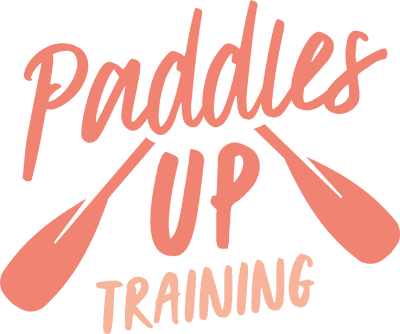So make a coffee, settle down and lets explore Becoming A Provider – Paperwork!

- Prerequisites
- Application process
- Orientation/ training course requirements
- Working alongside or observing existing providers
- Who can advise or mentor you through the process?
These are just a few examples of things you might consider. But when you start to look at becoming a provider – paperwork can fall to the bottom of your list!
Writing Your Course Programme and Risk Assessment
When you book your provider orientation or moderation, you will be asked to provide a sample of your risk assessment and course programme. You need to email them in before your providers’ course, and they will be read by your national trainer(s) so that they can provide feedback on them as a part of the day. We don’t expect the finished article at this stage, however it helps us build a picture.
These documents will form part of their decision making process on your course outcome, so it’s a great chance to make a good first impression! If you are going to your first provider orientation, this can seem a daunting task, so here are some hints and tips to help make sure you start your course on a high.
Jenna’s Top Tip – When you observe courses in the run up to your orientation, have a chat with the providers about how they go about writing their programmes and risk assessments. Don’t just copy them though; the thought process that goes into writing them for yourself is a really important part of your preparation for running good courses.
Course Programme
Every course you run will be different, because it will be tailored to your group. We want to see, from your course programme, that you are able to cover the content in a way that works best for the people in front of you.
For example, consider these two groups of people, booking you to run an FSRT, and have a think about how you might adapt the course to suit their needs and the conditions:


Aspects of course planning you will need to consider:
How are you going to manage the timescales of the course? Group A might well cope fine with a 1 day course, but perhaps group B would do better if you could split the content over 3 or 4 club nights.
Are there areas of the syllabus that might need more or less time for the two groups? How can you plan your course help you to mitigate some of the risks you have identified in your risk assessment? How will your venue influence the layout of the course? Somewhere where there’s a bit of travelling time between the centre and the water will require much more logistical planning than somewhere with a well stocked boat shed right next to the water, with changing facilities and a classroom area on hand.
Jenna’s Top Tip – Don’t just send in the programme you downloaded from the British Canoeing Awarding Body website! While that will, of course, be the document you work from to produce your own programme, it’s all about making a workable document that suits you. Your course programme should have just enough detail for you to be able to run the course with it as an aide memoir. If you are new to running a particular course, you might want to include a fair bit of information on what to coach and how you are going to do it. If you have been running a particular course for years, however, it might be a shorter bullet point list. I always aim for something I can laminate and stick in my boat, or in my BA.
Risk Assessments

- This could be for the last course you ran, or for the venue you use most often.
- Or for your first one course, at the place where you work most often.
For example: on safety courses the group will be cold and wet for a lot of the day, so much more thought needs to go into dealing with the risk of hypothermia/exposure.
Ask yourself:
- What kit do they have?
- What time of year is it?
- Do you have access to facilities that mitigate some risk? e.g. showers.
As the group are going to be in the water a lot:
- water quality and the prevention of water borne infection becomes really important.
You may also need to consider the risks of ‘lone working’ in a remote environment:
- What will happen if you have an accident?
- Would the people you are with know what to do?
Jenna – I’m not looking for your risk assessment to be in any particular format, or for it to look anything like mine!
What I’m looking for is evidence that you have thought about the course carefully and you are going to be able to manage the risks when you are out there running it. As a start point, I like to run through the course content in my head (often easier once you have a rough draft of the programme), and jot down all the areas where hazards and risks can occur. Then you can go back and put them into your preferred format and think about how you are going to minimise those risks.
Make Use of Your Mentor
Your mentor can help you by:
- Making sense of any questions.
- Run through your plans for running the course.
- Make sure you are fully prepared for your orientation.
Next Steps
Becoming a provider is a big decision, but it is incredibly rewarding – good luck on this exciting journey.
Want to know more about becoming an Paddlesport Safety and Rescue Provider? Click here!
Want to know more about British Canoeing Awarding Body Qualifications? Click Here




 Go Paddling
Go Paddling Clear Access Clear Waters
Clear Access Clear Waters Paddles Up Training
Paddles Up Training Clubhouse
Clubhouse Services Login
Services Login